We have seen about non-concentrating or flat plate type collector in the previous article. Now, we are going to see about Concentrating type solar energy collectors. Before we start to discuss the concentrated type collector, We should know why we need to go for a concentrated type solar collector. The reason is that for some of the industrial heat requirements and central power generation, the flat plate collectors cannot provide sufficient temperature to the carrier fluids in elevated and in an effective condition. So, for those situations, we need to prefer Concentrated Solar Collector. It may be used as a first-stage heat input devices. Then the temperature of the carrier fluid is further increased by other heating sources.
Concentrating Type Solar Collectors
Concentrating type collector is a device to collect solar energy with high intensity of solar radiation through its energy-absorbing surface. It uses reflective surfaces that concentrate sunlight on a small area. This type of collectors typically uses an optical system in the form of reflectors or refractors. In these collectors, the radiation falling on the large area is focussed on to a receiver which has a considerably small area. As a result of this concentration, the fluids passing on the receiver can be heated to the temperature of 500°C. These type of collectors can provide high temperatures effectively than flat plate collectors since the absorption surface area is much smaller. Let us discuss their types.
Parabolic Trough Collector (Line Focusing Collector)
It is also called as a line focusing collector. The Parabolic Trough Collector works based on the principle of geometry that a parabolic reflector pointed towards the sun will reflect parallel rays of light to the focal point of the parabola. So, solar radiation comes from a particular direction is captured over the area of reflecting surface and is concentrated at the focus of the parabola. Therefore, the energy will be concentrated onto a small receiver area. This process of concentration allows the trough to deliver high-temperature thermal energy. However, to achieve such concentration, the trough tracks the sun in one axis continuously throughout the day. To achieve maximum efficiency, the required tracking accuracy will be maintained within a fraction of degree. The parabolic trough collectors are usually made of highly polished aluminum or slivered glass or a thin film of aluminized plastic.
Mirror-Strip Reflector
This type of collector has a number of plane or concave mirror strips mounted on a flat base. The angles of the individual mirrors are arranged at different angles. So that they reflect solar radiation from a specific direction to the exact focal line. The angles of the mirror can be adjusted to allow for changes as per the sun's elevation. But, the focal line remains in a fixed position. Also, this type of collectors can be designed such that the mirror strips are fixed and the collector pipe moved continuously to remain on the focal line of the collector.
Fresnel Lens Collector
Before we discuss this type of collector, let's take a look about the Fresnel lens. It is a type of lens which has flat on one side and ridged on the other side. It is used to concentrate light into a powerful beam. This type of lens is mostly used in lighthouses to concentrate the light rays into a powerful and parallel beam. So, that people can view the light in naked eyes clearly as far as 20 miles distance. It is made by using sections of inexpensive plastic such as acrylic or polycarbonate as well as glass and also the larger size can be produced at low cost.
Fresnel lens collector uses the focusing effect of the Fresnel lens to concentrate solar energy. The lens is about 4.7m in overall length and width of 0.95m. The concentrated solar radiation is directed to hit the absorber pipe to get the heat energy for fluid inside the receiver pipe or solar cells. The material of the absorber surface is black chrome steel. The absorber pipe is enclosed with a pyrex (glass) jacket to reduce the thermal losses due to convection and radiation.
The Fresnel lens collector can be more effective by aligning the collector with the sun in two directions either east-west or north-south and orient them perpendicular to its length. The total solar energy collected annually is 30% greater in east-west orientation than in north-south orientation.
The Fresnel lens collector can be more effective by aligning the collector with the sun in two directions either east-west or north-south and orient them perpendicular to its length. The total solar energy collected annually is 30% greater in east-west orientation than in north-south orientation.
Flat Plate Collector with Adjustable Mirrors
It is a modified form of the flat plate collector which consists of a flat plate collector facing the sun with mirrors attached to north and south edges. The mirrors are set at the proper angles so that they can reflect solar radiation perfectly on the absorber plate. To use the mirrors effectively, the angles of the mirrors should be adjusted continuously as per the sun's altitude changes. The mirrors reduce some amount of scattered radiation and it will be reflected back on to the absorber.
Compound Parabolic Concentrator
It consists of two facing parabolic mirrors connected on the flat plate collector. It is designed to collect solar radiation efficiently with some acceptance angle. The main advantage of using this collector is that it can offer higher geometrical concentration gain with a narrow field of view. The solar radiation from many directions is reflected towards the bottom of the trough by using the parabolic concentrators. It is used to concentrate both direct and scattered solar radiation. So, This type of collector has the highest possible concentration ratio. Also, because of its large aperture area, it requires only intermittent tracking system.
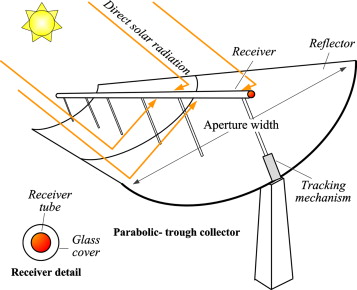
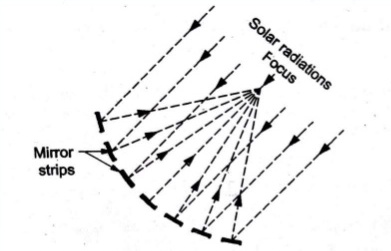
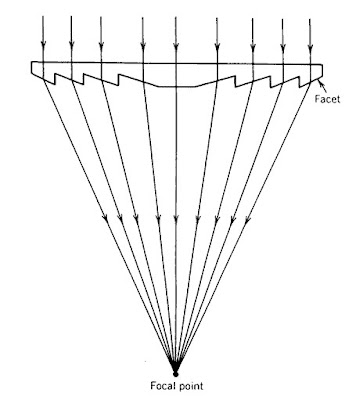
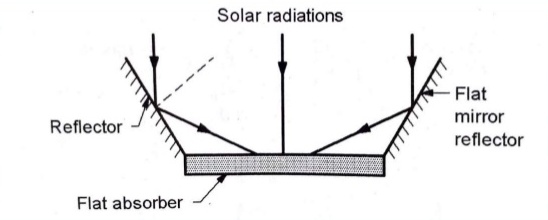
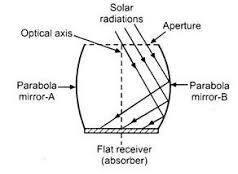
Comments
Post a Comment